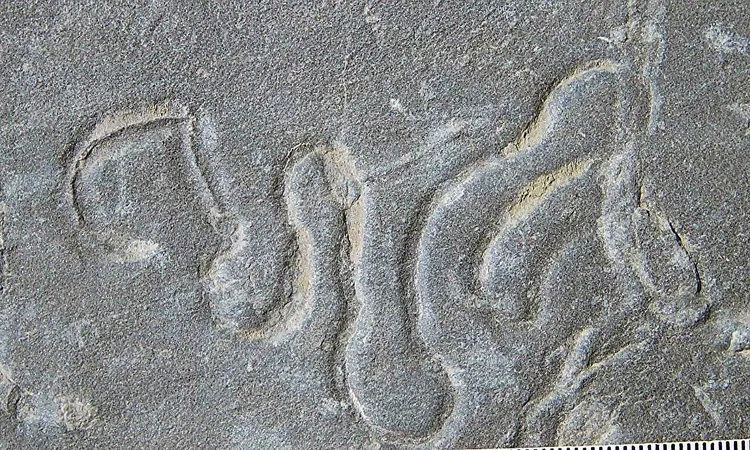
New Fossil Discovery Challenges Our Understanding of the Cambrian Explosion
2025-07-16
Author: Yu
A groundbreaking fossil discovery has sent ripples through the scientific community, raising new questions about the Cambrian Explosion—a pivotal moment in Earth’s history often described as the dawn of complex life. What once appeared to be chaotic squiggles on ancient seabed mud have been revealed as intentional trails made by primitive creatures nearly 550 million years ago.
Could These Be the First Signs of Animal Mobility?
Recent analysis of 170 trace fossils—marks left by ancient animals—suggests that these early organisms were gracefully gliding across the ocean floor a full 10 million years before the Cambrian Explosion is traditionally believed to have occurred. Despite the prevailing narrative that the Cambrian period marked a sudden burst of evolutionary innovation, these findings suggest that the roots of sophisticated life run deeper than previously thought.
Mapping the Evolution of Movement
Dr. Zekun Wang and his team from the Natural History Museum in London, along with colleagues from Canada and China, have meticulously categorized these ancient tracks into three distinct phases of mobility. The earliest tracks exhibit erratic movements, indicative of simpler, less aware creatures, while later paths reflect a marked improvement in coordination, resembling modern-day worm burrows.
Wang explains, "Life in the Ediacaran was no longer microscopic, but typically, it didn’t have the ability to navigate the seafloor effectively. By about 545 million years ago, motion had evolved from clumsy stumbling to smooth cruising." This transformation corresponds with a major geological upheaval known as the Cambrian Substrate Revolution, which may have opened up new ecological opportunities.
Uncovering the Secrets of Ancient Movement
The study of ichnology—the science of fossilized traces—offers a unique perspective; it allows scientists to decode ancient behavior by examining how these creatures moved. By employing advanced mathematical techniques to analyze curvature in their tracks, the research team has unearthed insights about the biology of these early animals. For instance, smoother paths imply organisms that could navigate efficiently, while jerky movements suggest more primitive forms.
Insights into Early Animal Life
The findings indicate a gradual development of anatomy and sensory capabilities, supporting the idea that evolutionary changes can unfold over time rather than erupt suddenly. The density of animal tracks also surged near the Ediacaran-Cambrian boundary, possibly hinting that more mobile bilaterians outcompeted stationary relatives, leading to the extinction of some iconic soft-bodied forms.
A Prelude to the Cambrian Explosion?
This research not only redefines the timeline of early animal life but also underlines the importance of movement in shaping ecosystems. Active foraging and burrowing could have played crucial roles in mixing sediments and redistributing nutrients, setting the stage for the rich marine life that characterizes the Cambrian period.
Looking Ahead: What’s Next?
With this updated perspective, scientists are keen to continue their exploration of ancient rock layers for more clues about the evolution of mobility and behavior. The implications extend beyond evolutionary biology to include insights into Earth’s biogeochemical cycles, as burrowing activities influence the burial of vital elements like carbon.
By studying the delicate traces left behind by these ancient navigators, researchers are piecing together a more nuanced understanding of life's early chapters on Earth. This exciting new angle not only enriches our view of the Cambrian Explosion but illuminates the persistent connections between behavior, environment, and evolutionary potential.




 Brasil (PT)
Brasil (PT)
 Canada (EN)
Canada (EN)
 Chile (ES)
Chile (ES)
 Česko (CS)
Česko (CS)
 대한민국 (KO)
대한민국 (KO)
 España (ES)
España (ES)
 France (FR)
France (FR)
 Hong Kong (EN)
Hong Kong (EN)
 Italia (IT)
Italia (IT)
 日本 (JA)
日本 (JA)
 Magyarország (HU)
Magyarország (HU)
 Norge (NO)
Norge (NO)
 Polska (PL)
Polska (PL)
 Schweiz (DE)
Schweiz (DE)
 Singapore (EN)
Singapore (EN)
 Sverige (SV)
Sverige (SV)
 Suomi (FI)
Suomi (FI)
 Türkiye (TR)
Türkiye (TR)
 الإمارات العربية المتحدة (AR)
الإمارات العربية المتحدة (AR)